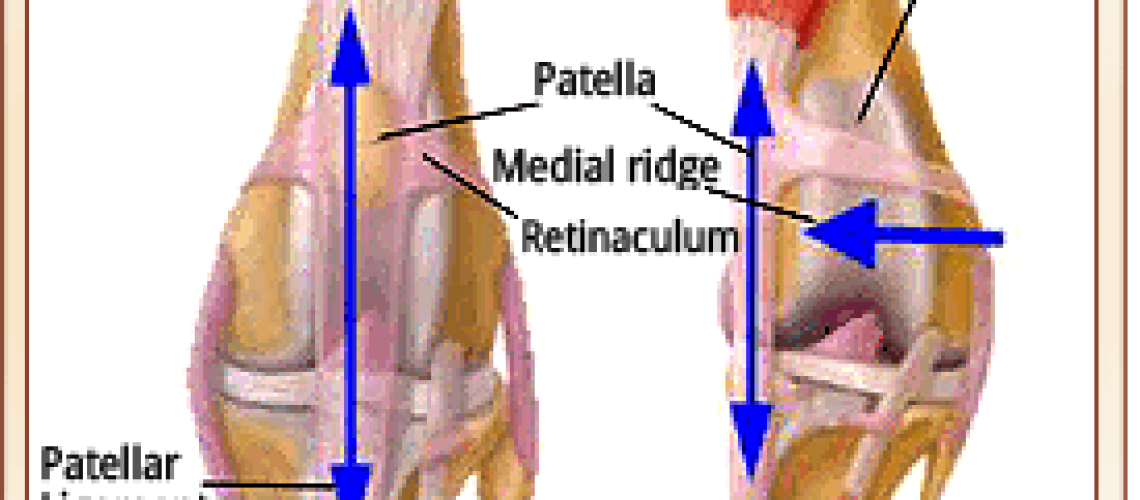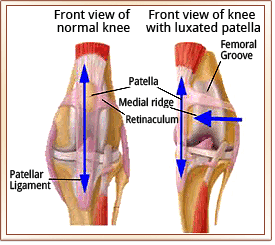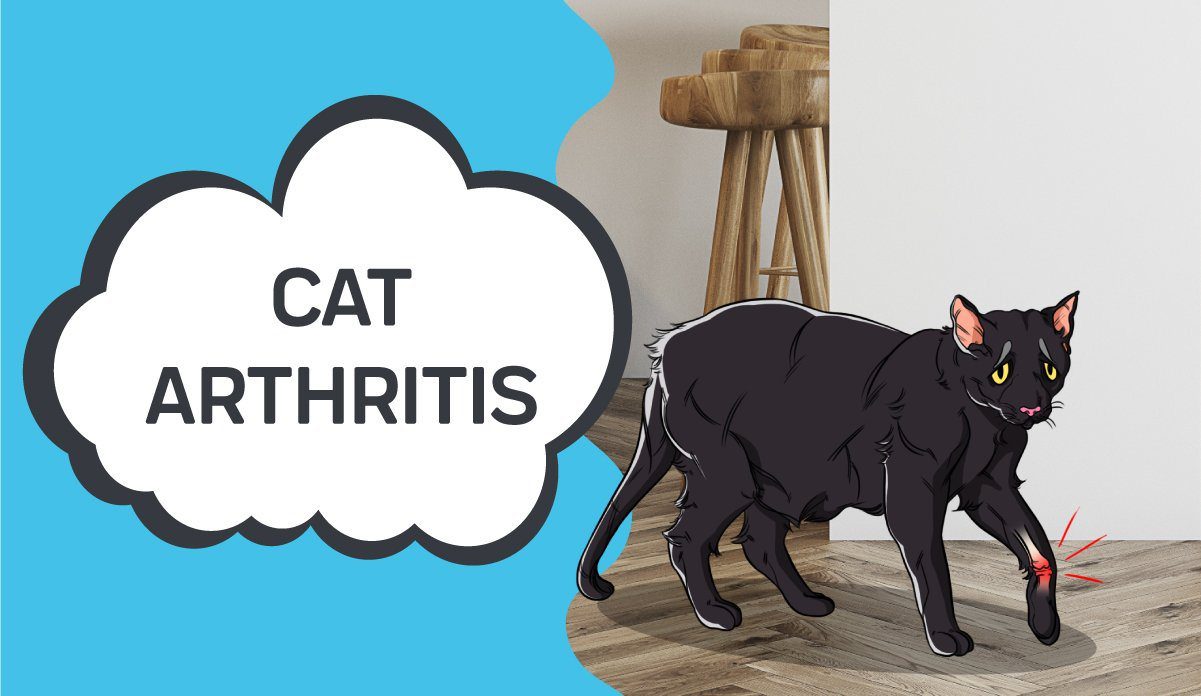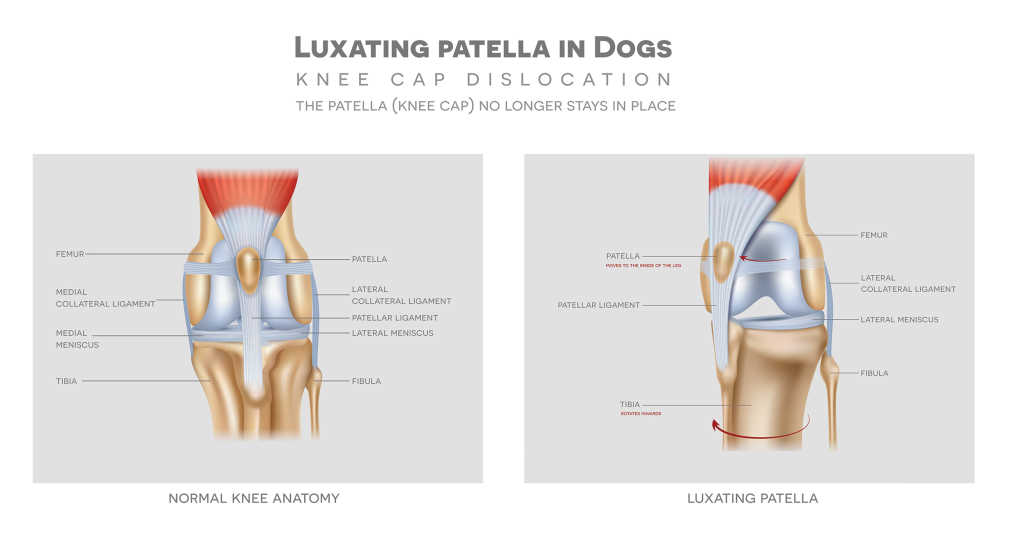Key Takeaways:
- Patellar luxation is a common orthopedic condition in dogs where the kneecap dislocates from its normal position.
- Small and toy breeds are more prone to patellar luxation, but it can occur in any breed or size of dog.
- Symptoms of patellar luxation include limping, skipping steps, lameness, and pain in the affected leg.
- Treatment options for patellar luxation range from conservative management with exercise restriction and pain medication to surgical correction.
- If left untreated, patellar luxation can lead to long-term joint damage and arthritis. Early diagnosis and intervention are crucial for a better prognosis.
Are you a dog lover? Have you ever wondered about the health issues that can affect our furry friends? Well, today we're going to dive into a topic that is not only fascinating but also crucial for understanding our canine companions better. We'll be exploring the world of patellar luxation in dogs - a condition that affects their knees and can cause discomfort and pain. By delving into this subject, we will gain valuable insights into how to care for our dogs and ensure their well-being. So, let's embark on this journey together and discover the importance of understanding patellar luxation in dogs.
Did you know that patellar luxation is one of the most common orthopedic conditions in dogs? According to recent studies, it affects approximately 7% of all canines. This means that millions of our furry friends may be suffering from this condition without us even realizing it! By learning about patellar luxation, we can become more aware of its signs and symptoms, allowing us to provide early intervention and alleviate any discomfort experienced by our beloved pets.
Imagine being able to recognize when your dog is in pain or discomfort due to patellar luxation. By understanding this condition, you'll be equipped with the knowledge to seek appropriate veterinary care promptly. You'll become your dog's superhero, ensuring they live a happy and pain-free life.
But what exactly is patellar luxation? How does it affect our furry friends? Patellar luxation occurs when a dog's kneecap slips out of its normal position, causing instability and hindering their ability to walk or run comfortably. It can lead to limping, lameness, and even joint degeneration if left untreated. By learning more about this condition, we can actively prevent further complications and provide necessary support for our four-legged companions.
So join us on this educational journey as we uncover the ins and outs of patellar luxation in dogs. Together, we'll discover the signs to look out for, the available treatment options, and most importantly, how to ensure our furry friends live their best lives. Let's dive into this captivating topic and become advocates for our dogs' health and happiness.
Understanding Patellar Luxation in Dogs: Causes and Effects
Causes of Patellar Luxation
Patellar luxation in dogs occurs when the kneecap, also known as the patella, slips out of its normal position. This can happen due to various reasons, such as genetic factors or trauma. In some cases, certain dog breeds are more prone to developing this condition due to their anatomy. For example, small breeds like Chihuahuas and Pomeranians have a higher risk of patellar luxation compared to larger breeds.
Effects of Patellar Luxation
When a dog has patellar luxation, it can cause discomfort and pain. They may limp or favor one leg while walking or running. In severe cases, the kneecap may completely dislocate, causing the dog to not be able to bear weight on that leg at all. Over time, this condition can lead to arthritis and joint degeneration if left untreated.
Signs and Symptoms of Patellar Luxation in Dogs: How to Spot the Condition
Common Signs of Patellar Luxation
If you suspect your dog might have patellar luxation, there are some signs you can look out for. These include limping or hopping on one leg while walking or running. Your dog may also show signs of pain when you touch their knee area or try to extend their leg. Another common sign is when your dog suddenly lifts their leg up while walking and then puts it back down.
How to Spot Patellar Luxation
To spot patellar luxation in your dog, gently feel their knee joints for any abnormalities. You might notice that the kneecap moves out of place easily when you apply slight pressure. If you observe any signs mentioned earlier or feel something unusual in the knee area, it's important to consult a veterinarian for a proper diagnosis.
Treatment Options for Dogs with Patellar Luxation: Exploring Available Solutions
Non-Surgical Treatment Options
In mild cases of patellar luxation, non-surgical treatment options may be recommended. This can include physical therapy exercises to strengthen the leg muscles and improve joint stability. Your veterinarian may also prescribe anti-inflammatory medications to reduce pain and inflammation.
Surgical Treatment Options
For more severe cases of patellar luxation, surgery may be necessary. The specific surgical procedure will depend on the underlying cause and severity of the condition. Surgery aims to realign the kneecap and stabilize it in its correct position. In some cases, additional procedures may be needed to address any associated joint abnormalities.
Breeds Prone to Patellar Luxation: Which Dog Breeds Should You Be Aware Of?
Small Dog Breeds Prone to Patellar Luxation
Certain small dog breeds are more prone to developing patellar luxation. These include Chihuahuas, Pomeranians, Yorkshire Terriers, and Toy Poodles. Due to their smaller size and genetic factors, these breeds have a higher risk of experiencing this condition compared to larger breeds.
Large Dog Breeds Prone to Patellar Luxation
While patellar luxation is more commonly seen in small dog breeds, certain large dog breeds can also be affected. Examples of large breeds that may have an increased risk include Labrador Retrievers, Golden Retrievers, and German Shepherds. Although less common than in smaller breeds, it's still important for owners of larger dogs to be aware of this condition.
Pain and Discomfort in Dogs with Patellar Luxation: How to Help Them Feel Better
Managing Pain with Medication
If your dog is experiencing pain and discomfort due to patellar luxation, your veterinarian may prescribe pain medications. These medications can help alleviate the pain and improve your dog's overall comfort level. It's important to follow the dosage instructions provided by your veterinarian and monitor your dog for any side effects.
Providing a Comfortable Environment
Creating a comfortable environment for your dog can also help them feel better. Make sure they have a soft bed or cushioned area where they can rest their affected leg. Minimize activities that put strain on the knee joint, such as excessive jumping or running. Additionally, providing gentle massages or applying warm compresses to the knee area can help relieve muscle tension and promote relaxation.
Preventing Patellar Luxation in Dogs: Lifestyle Changes and Exercises that May Reduce the Risk
Maintaining a Healthy Weight
Maintaining a healthy weight is crucial for reducing the risk of patellar luxation in dogs. Excess weight puts additional stress on the joints, making them more susceptible to injuries and conditions like patellar luxation. Ensure your dog receives a balanced diet and regular exercise to help them maintain an optimal weight.
Low-Impact Exercises
Engaging in low-impact exercises can also be beneficial for preventing patellar luxation. Activities such as swimming or walking on softer surfaces like grass or sand are gentler on the joints compared to high-impact activities like jumping or running on hard surfaces. Consult with your veterinarian to determine appropriate exercise routines for your dog based on their breed, age, and overall health condition.
In conclusion, patellar luxation is a condition where a dog's kneecap moves out of place. It can cause pain and difficulty in walking, but with proper care and treatment, dogs can lead happy and active lives.
How do you treat a dog with a luxating patella?
The majority of grade I and grade II cases are managed with pain medication, anti-inflammatory drugs, controlling weight, and limiting exercise. Physical rehabilitation therapy can also be beneficial in rebuilding muscle strength and gradually reintroducing normal activities for your dog.
Can a luxating patella heal itself in a dog?
Surgery is the only effective solution for patella luxation. Without surgery, treatment focuses on managing pain and inflammation. If left untreated, the condition can lead to increased osteoarthritis and cartilage damage, as well as a higher risk of cranial cruciate ligament disease.
How long can a dog live with luxating patella?
Certain dogs, particularly those with Grade I patellar luxation, can manage this condition for many years, possibly even their entire lifespan. However, as the dog gets older, arthritis will develop, leading to reduced mobility and joint discomfort. Once arthritis sets in, it cannot be reversed.
Is it OK to walk a dog with luxating patella?
Depending on the severity of your pet's luxating patella, you may need to modify their exercise routine to include less strenuous activities. This doesn't necessarily mean you have to significantly reduce exercise or eliminate playtime, but it might be better to prioritize walking over jumping.
How much does dog patella luxation surgery cost?
The cost of luxating patella dog surgery ranges from $1,000 to $5,000 per leg. The specific price depends on variables such as the dog's size, the severity of the luxation, any additional injuries or arthritis, geographical location, and whether one or both knees are affected.
How do I know if my dog is in pain with luxating patella?
Signs of a Luxating Patella can include your dog experiencing a momentary limp while walking. Their knee joint may become stuck in an unusual position, resulting in them walking on three legs. In more severe instances, this displacement from the normal position can cause pain and may lead to your dog vocalizing in distress.

















